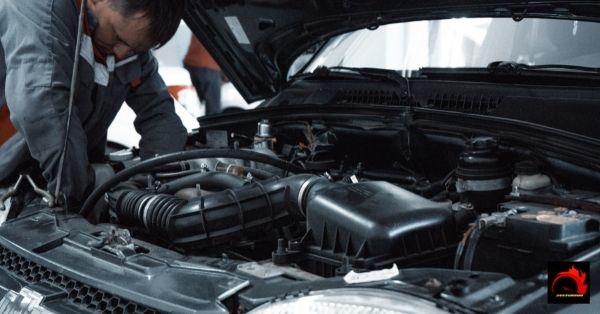We hope you don’t be in a position where a dead car battery leaves you without power. However, we aren’t so fortunate as it’s a scenario that we’ll likely be at some point in our lives. In the majority of cases the only thing you require to restart your car is a few jumper cables and a car with a strong battery. Continue reading and we’ll explain how to safely jump-start your car to get back on the road.
We’ll also discuss why your battery is low, and what could you do avoid any further issues.
A dead battery can be the beginning of a difficult day for many motorists. Whether you are driving the fastest car in the world or some vintage old car, a dead battery is trouble in both cases. In the dark, leaving the lights on is the most frequent cause of the dying battery. The ability be able to jump your car with the vehicle of a family member is crucial for those unexpected circumstances. Follow these steps for a quick start in jumping your car’s battery.
Getting Started
Make sure both cars are in a straight line with their hoods up. Find your car’s battery and then examine its terminals in order to identify if the positive one (denoted by an “+” symbol) and which has a negative charge (denoted by the “-” symbol).
It’s recommended to check the batteries on both vehicles to make sure they’re not leaking or showing any other indications that indicate physical harm. On certain cars the battery is mounted beneath the rear seat or inside the trunk. In these instances it is common to find places near or on the engine that could be used to start a jumpstart.
Check your owner’s manual to assist you in locating the jumper cables if you’re having problems. It is also essential to check the jumper cables in order to ensure that they’re not affected in any manner. Take note of the insulation of your wire. They aren’t likely to break or get damaged However, it’s vital to inspect.
Verify Voltage
Prior to beginning the procedure of jumping a car make sure that the battery in the other vehicle is at least the same voltage as your battery.
Jumper cables
Keep a set of cables for jumper use in your trunk vehicle. If you’re not able to locate cables, ask for help from a family member.
Place the vehicles in parking Mode
Make sure that both vehicles have their ignitions shut off and are activated the brake for parking.
The red clip must be attached
The red clip connects directly to the terminal that is positive of the battery, while the red clip connects on the positive terminal of the vehicle that is providing the jump.
The black clip clips are attached
One of the clips in black is attached directly to the terminals of negative of the car you’re helping. The other black clip connects to a non-painted metal surface of your car that isn’t in close proximity to the battery.
Start the car that is working before you start the working car
The engine of the car that’s jump-starting your car for a couple of minutes.
Start your car then start your vehicle. After the car has started it should be running for minimum 15 minutes. The battery should be charged prior to driving.
Unplug the cables
- Take off the black clip that was not attached to the battery
- Take off the black clip that is attached to battery
- Remove the red clip from the car battery to provide the jump
- Remove the red clip from the car battery which is receiving the charge.
Connecting the dots
Make sure that the cars are off. The red connector should be connected to the negative (+) side of your dead battery (or the underhood connector we talked about earlier). Do a gentle flick to ensure that it’s secure. After that, attach the cables in red to your car that you are donating to.
Attach your black cable onto your positive (–) terminal of the car that is being donated. Then, connect the second cables black to negative terminal on the dead battery or an unpainted part underneath the hood in the event that the battery is located remotely. If all connections are secured and you are able to start the car that you donated, and let it sit idle for a while until it is able to supply energy to your dead battery.
What Caused My Batterie to die?
There are a variety of possible reasons for dead batteries. Did you keep the lamp on? Are the batteries getting old? The battery inside your car serves to start the vehicle, as well to power various functions in the event that the car is turned off, for example, the alarm. If the vehicle is left in storage for an extended period of time of time – 2 weeks or so, it’s likely that the battery is depleted due to these activities.

When the engine is in operation and the alternator is running, it recharges the battery and performs various electrical functions for your car. Like all rechargeable batteries the battery will wear down as time passes. After many years of charge or discharge cycle, the battery will need replacement. Other factors, for instance, harsher climates with extreme temperatures or extreme cold or both, could have an adverse effect on the lifespan for the battery.
The Next steps?
To avoid this problem to prevent it from happening in the future, you must make an appointment with the service center run an uninvolved battery test. They’ll be delighted to give you advice regarding the condition of your battery, and can even install the battery too. There are plenty of places to purchase batteries, such as the department store. Make sure that the servicing center is run by certified specialists who know how to take care of your vehicle.

They should have the correct factory battery that is compatible with your vehicle. Make sure that they are able to replace it without causing harm to the electrical system. Also, they must be aware of any particular brackets, vents, or other accessories that could cause problems during installation. They’ll be able to safely dispose of the old battery. After a jump-starting, your first call should be to your local dealer to have the battery checked and, if required it is replaced.
Wrapping Up
It is possible to check the battery in your vehicle by opening the doors. If the dome light turns on and stays bright, the battery might be able to power the vehicle. Try to get your car started and, if it does work take care to take the jumper cables out in the reverse order the order you connected them. Be cautious around moving parts of your engine. That’s about it! If you’re safe and cautious the process of jumping starting the car is not difficult. You can accomplish it using the help of a donor vehicle and some cables!




